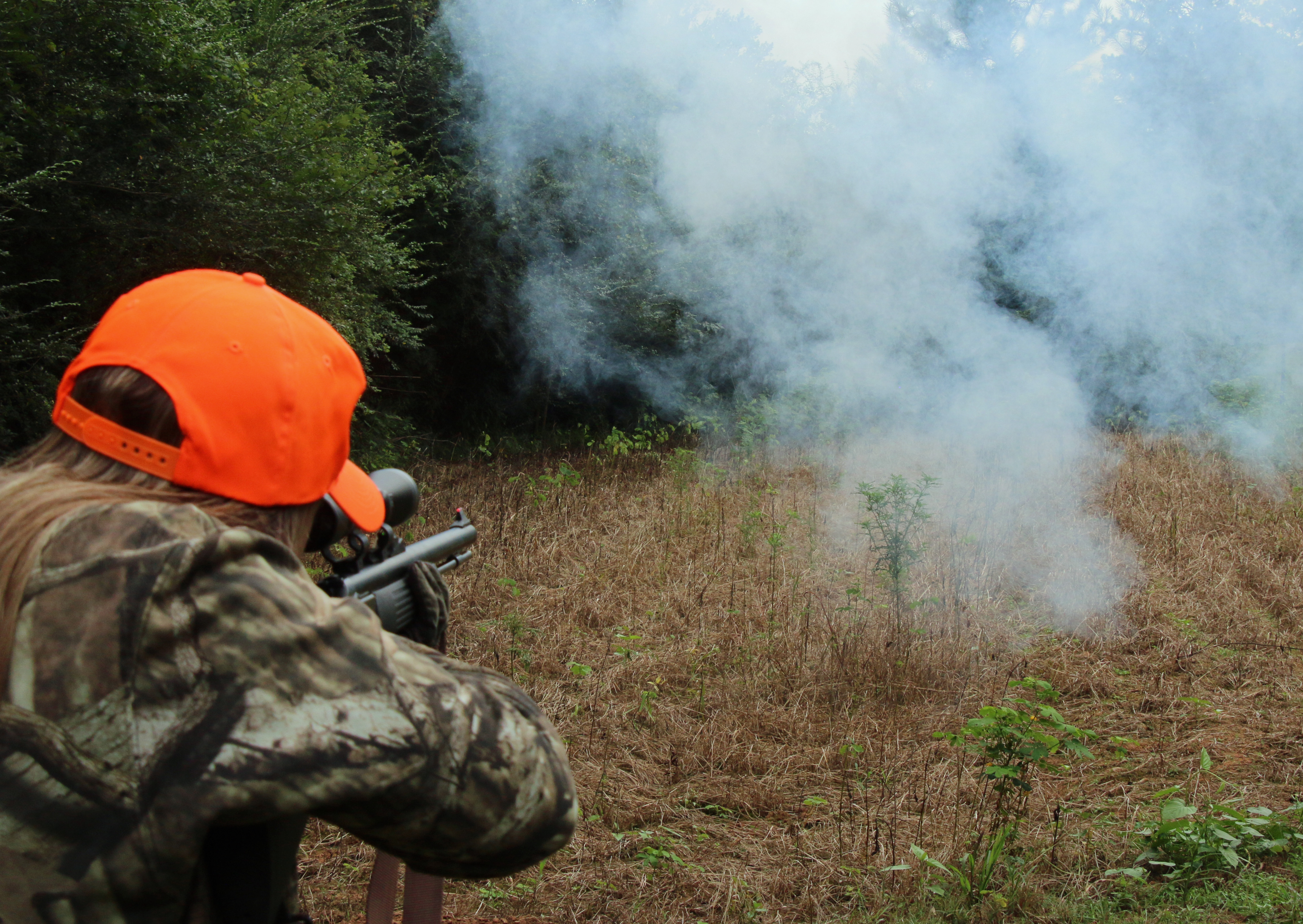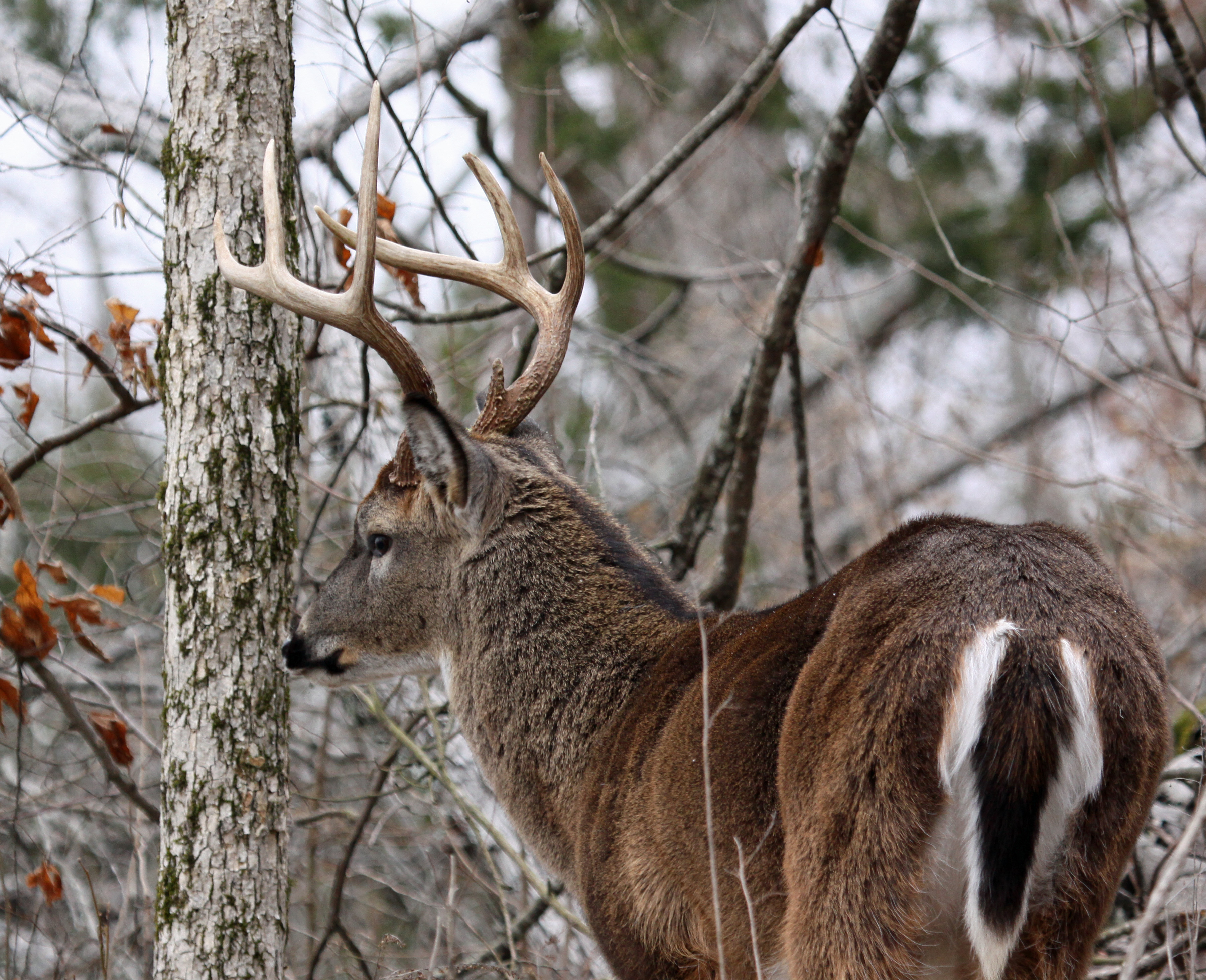Hunters that favor modern muzzleloader hunting over rifle hunting have a head start to smoke out a buck.
Each November the smell of smoke is in the air. Not from a forest fire, but from a muzzleloader hunter that has just downed a buck. Hunters the prefer modern muzzleloader hunting have a week’s worth of opportunity to tag a buck before the start of the regular firearm season in the Cotton State.
In the past two decades, modern muzzleloader hunting has literally exploded. Two main reasons behind the surge in hunting with blackpowder is a special season just for muzzleloaders and the advent of the in-line muzzleloader rifle. The modern muzzleloader hunting season was originally at the end of the season. Several years ago, the smoke-pole season was moved just ahead of the firearm season.
Now the muzzleloader hunters have the first shot at deer before the modern rifle hunters thin the herd. But, this early jump doesn’t mean it will mean venison in the freezer. Muzzleloader hunters will need to pay attention to some details if they want to fill a lot on their deer tag.
Prep Powder and Practice
There are three types of rifles for modern muzzloader hunting. The flintlock, caplock and modern inline. The old flintlock used a piece of flint on the hammer that struck a plate to give a spark to ignite the powder in a pan that in turn ignited the powder charge in the barrel. The caplock used a small percussion cap on a nipple that when struck by the hammer would ignite the barrel charge.
The inline rifle uses a shotgun style number 209 primer in a bolt or breech to set off the powder charge. Break-action muzzleloaders have gained popularity to make entry into black-powder hunting easier and less frustrating. Some black-powder purists continue to use the caplock style rifles.
All three styles of black-powder rifles have one thing in common, they must be loaded from the muzzle. Traditional blackpowder is classified as an explosive and can be difficult to find and expensive. Most new propellants are black-powder substitutes and much easier and safer to use.
“The blackpowder we have today is much easier to handle and burns cleaner,” mentions Arlie Fortner, store manager for Shotgun Sports in Saks, Ala. “The pellet style powders like Triple 7 or White Hots make loading a muzzleloader quick and simple.”

He suggests going to the shooting range and trying different powders and bullet styles to see which performs best in your muzzleloader. When sighting in a muzzleloader run a cleaning patch down the barrel about every three to four shots. This helps keep the barrel clean, providing more consistent shooting.
Some muzzleloader hunters prefer the loose type powders. These can be measured out in different grain charges to get the optimum load for your specific black-powder rifle. The pellet type powders are 50- grain size so no measuring is required. Pellet powders are also available in 30- and 60- grain sizes.
For loose powder shooters, Blackhorn 209 is a well-performing powder that burns clean and performs well in caplock or inline muzzleloaders.
“You should practice shooting your black-powder rifle,” advises longtime deer hunter Ken Duncan, formerly of Hokes Bluff, Ala. “With practice, you get to know your rifle and how it performs and the distance it will accurately shoot.”
Another suggestion from Duncan is to keep your rifle clean. Even with the black-powder substitutes, a muzzleloader will need cleaning and care to shoot at its maximum capabilities. Also, hunters should keep their powder dry and stored in original containers until ready to use.
Hunting Strategies
Set ups deer for muzzleloader hunting fall in between archery and rifle hunting. With a black-powder rifle, hunters will be able to shoot further than bowhunters and less than a modern rifle hunter. Usually, most muzzleloader hunters setup to close to a food source or deer trail.
“Hunting with blackpowder you don’t have to be as close to the deer as with a bow,” Duncan reports. “You can move your stand back 50- to 75- yards away from where the deer should step out.”
When modern muzzleloader hunting, hunters will have only one shot, so it needs to be a good one. Make certain your setup has a few clear shooting lanes. Know your shooting distance to different spots. Most modern muzzleloaders with a scope can take a deer out 150- yards or more.
“When muzzleloader hunting, hunters will have only one shot, so it needs to be a good one.”
Speed loaders are available for black-powder hunters to get a quick re-load if needed. The loaders can be clipped to safety vest of rifle stock for easy and quick access. The speed loaders can be pre-set with bullet and powder. These make it simple for a re-load in any situation.
Blackpowder has an affinity for moisture. Moving a charged muzzleloader rifle from a warm environment into the cold woods can cause condensation in the barrel, thus introducing moisture into the powder. Savvy blackpowder shooters will wait until they are in the woods or field before charging their muzzleloader.
Rain shouldn’t deter blackpowder hunters from heading out on a deer hunt. Inline muzzleloader rifles are not as susceptible to rain as their earlier cousins. However, certain precautions should be taken to keep the powder dry.
One trick smoke-pole hunters use is placing a piece of electrical tape over the muzzle end of the barrel. This will help prevent rain from entering the barrel and fouling up a shot. Also, a finger from a rubber glove can be trimmed and stretched over the barrel. Either of the practices will not affect the shot.
Caplock muzzleloaders are a little different since the percussion cap is in the open. Duncan used a sleeve from an old rain suit to fashion a protective cover over the cap and hammer on his rifle. He could easily slide the cover off when it was time to shoot.
During a rain event, shooting houses and blinds can be safe haven for black-powder hunters. Pop-up blinds are easy to set and can be placed in areas where deer will be moving. The blinds are inexpensive and light-weight. There are models of tree stands that fit over climbing stands to help keep the muzzleloader and hunter dry.
Finding the Deer
All the practice and preparation won’t matter if you can’t locate the deer. If you have been bowhunting the month prior to muzzleloader hunting season,
“Hunt the food sources in your area,” mentions Duncan. “Acorns should still be dropping in most areas. White oaks are my choice.”

Other top areas are green-fields, food plots, and agriculture fields. Hunters should scout for trails leading form cover into these open areas. A good set is back inside the wood line where you can see the field edge and the trail leading into the field.
Depending on your hunting location the rut could be starting. Smoke-pole hunters can try calling with doe bleats and rattling sequences to draw in a buck. In areas where the rut may still be a few months away, buck and doe grunts can bring a buck out of hiding.
Midday hunts is another tactic black-powder hunters can use to their advantage. By late morning most hunters will be exiting the woods. Their movement can push a buck by your stand. Also, older, wiser bucks have been pressured early and late in the day will move more during the lunchtime hour.
Modern Muzzleloader hunting can be challenging. But, when the smoke clears and your buck is on the ground, that reward makes for a great day outdoors.
